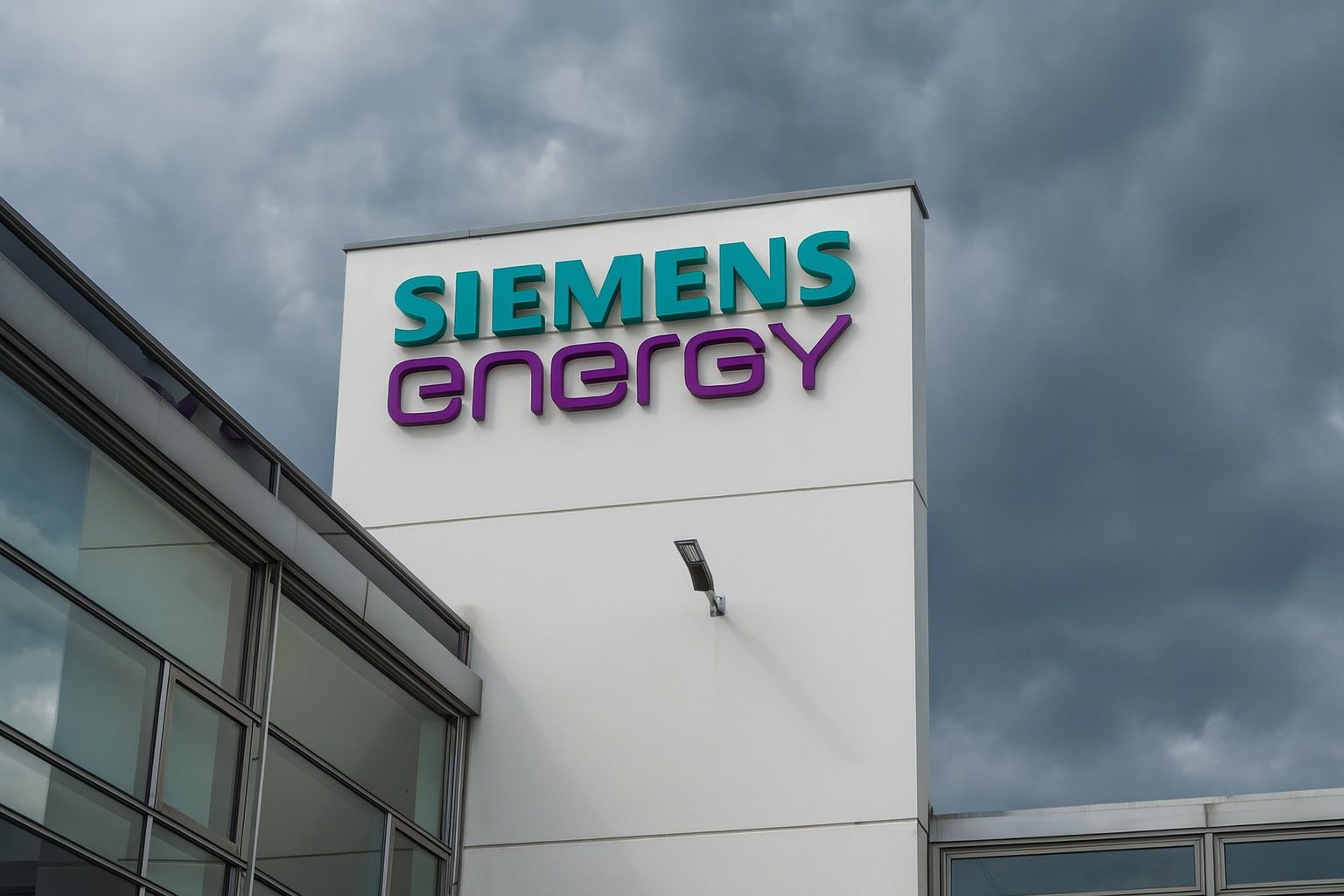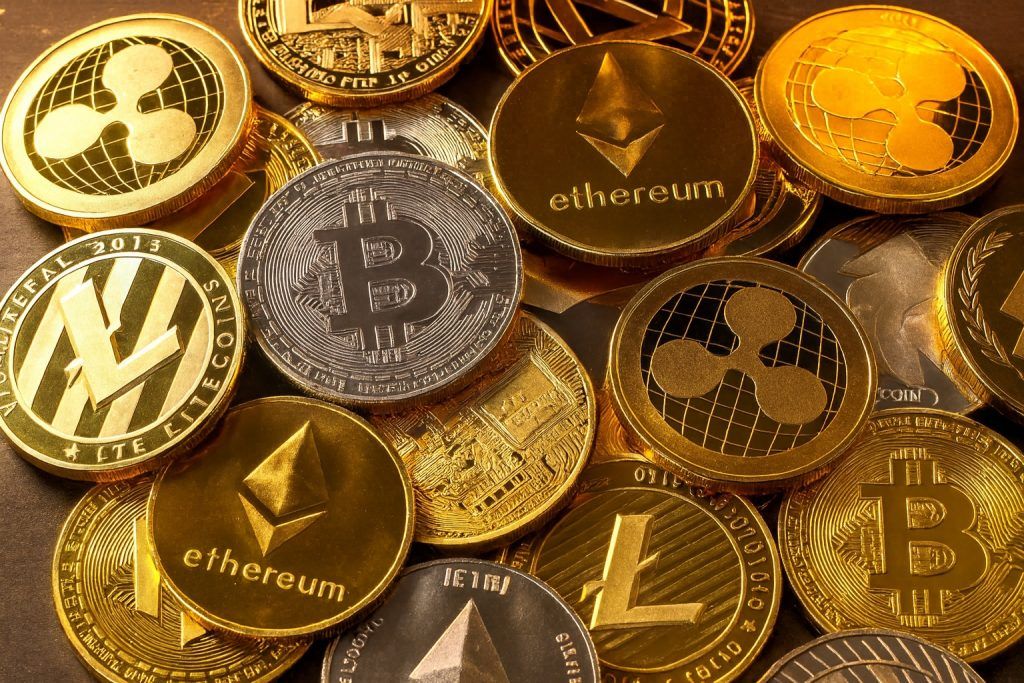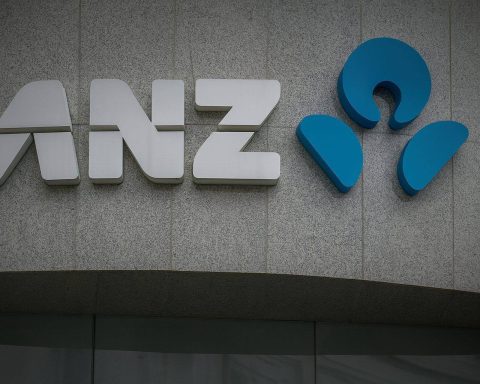Published: 22 November 2025
Siemens Energy is closing out a pivotal week at the very center of global energy and equity-market headlines. Fresh coverage today focuses on three big themes: a powerful FY2025 earnings recovery, an aggressive shareholder-return and grid-investment plan, and a string of strategic moves – from an advanced nuclear deal with Oklo to new Siemens Gamesa turbine orders in Germany – all while the share price suffers a sharp pullback after a spectacular rally. [1]
Below is a deep dive into what’s happening with Siemens Energy on 22 November 2025 and why it matters for investors, policymakers, and the broader energy transition.
1. Earnings momentum: Siemens Energy’s FY2025 results reset the baseline
On 14 November, Siemens Energy reported what management describes as a “successful year” and the strongest group performance since the spin-off from Siemens AG. [2]
Key FY2025 numbers:
- Orders: €58.9 billion, up 19.4% year-on-year on a comparable basis
- Revenue: €39.1 billion, up 15.2% on a comparable basis
- Profit before special items: €2.355 billion, implying a 6.0% margin
- Net income: €1.685 billion, up from €1.335 billion in FY2024
- Free cash flow (pre-tax): €4.663 billion, more than double the prior year
All major segments – Gas Services, Grid Technologies and Transformation of Industry – delivered double‑digit revenue growth and substantial margin improvement, while Siemens Gamesa’s loss-making wind business narrowed its losses as integration and quality programs began to bite. [3]
Crucially for equity investors, Siemens Energy proposed a €0.70 dividend per share, its first payout in four years, after replacing an €11 billion federal guarantee with a €9 billion commercial facility and regaining investment-grade ratings. [4]
Today’s coverage on Yahoo Finance and other financial outlets frames these earnings as “just the starting point”, highlighting that:
- Earnings beats were backed by strong cash generation, not just accounting changes.
- The company’s accrual metrics suggest the profit quality is relatively high, increasing confidence in the sustainability of the turnaround. [5]
In other words, Siemens Energy now has both the operational momentum and balance-sheet strength it largely lacked in 2023, when wind losses and guarantee concerns weighed heavily on the stock.
2. €6bn share buyback and €2.3bn grid investment: leaning into the power-equipment super-cycle
The big strategic pivot this week came at Siemens Energy’s Capital Markets Day on 20 November in Charlotte, North Carolina. Management laid out an aggressive capital-allocation and growth plan that is still echoing through today’s commentary. [6]
Up to €10bn for shareholders through 2028
According to an ad‑hoc announcement and Reuters reporting, Siemens Energy plans to return up to €10 billion to shareholders by the end of 2028, split between: [7]
- Up to €6 billion in share buybacks through FY2028
- The remainder via dividends, building on the FY2025 restart
The company is explicitly pitching itself as a structurally higher‑margin, high‑cash‑conversion business that can both finance heavy capex and still return roughly one‑third of available cash to shareholders, in line with rival GE Vernova. [8]
€2.3bn for transformer and switchgear factories
On the growth side, Siemens Energy is doubling down on its biggest tailwind: grid bottlenecks. Slides released ahead of the CMD and subsequent coverage reveal that the company will invest around €2 billion (US$2.3 billion) in its global network of transformer and switchgear factories by 2028. [9]
Additional details from ESG News and company materials: [10]
- Capex and R&D in 2026–2028 will be about 20% higher than in 2023–2025.
- The investment targets key grid‑equipment hubs as electrification, data centers and renewables strain existing networks.
- Siemens Energy will consolidate Siemens Gamesa’s onshore wind manufacturing footprint to four sites by 2026, down from ten in 2023, focusing on quality and cost discipline.
The logic is clear: with global electricity demand forecast to climb sharply to 2035, and data centers/AI driving huge new load, Siemens Energy wants to be the go‑to supplier of high‑margin grid infrastructure – and it’s willing to put billions behind that bet. [11]
3. Oklo partnership: Siemens Energy steps into advanced nuclear with the Aurora powerhouse
One of the most eye‑catching strategic headlines feeding into today’s analysis is Siemens Energy’s new deal with Oklo Inc., an advanced nuclear company developing small, fast fission reactors.
On 19 November, Oklo and Siemens Energy announced a binding contract for the design and delivery of the power conversion system for Oklo’s first commercial project, the Aurora powerhouse at Idaho National Laboratory (INL). [12]
Under the agreement, Siemens Energy will:
- Engineer and supply a condensing SST‑600 steam turbine
- Provide an SGen‑100A industrial generator and associated auxiliaries
- Begin detailed engineering and procurement of long‑lead components, de‑risking the project’s schedule and supply chain
The power-conversion system is one of the major long‑lead items required before Aurora can start operations. The design deliberately pairs advanced reactor technology from Oklo with proven, commercial turbine‑generator equipment from Siemens Energy, aiming to cut risk, shorten timelines, and make SMR projects more financeable. [13]
Fresh coverage today – notably from Simply Wall St – argues that this Oklo–Siemens Energy deal could become a template for clean‑tech partnerships, where Siemens provides bankable hardware into novel energy platforms (SMRs, advanced fission, and potentially other next‑generation assets). [14]
For Siemens Energy, the strategic upside is less about near‑term revenue and more about:
- Planting a flag in advanced nuclear, a potential high‑growth niche in decarbonised baseload power.
- Showcasing its rotating‑equipment portfolio in a new, high‑profile context.
- Building optionality for a pipeline of future SMR projects if the technology proves out.
However, investors should remember that advanced nuclear still faces significant regulatory, financing and market risks. The Aurora project remains early stage, and timelines could slip. This is a strategic position‑taking move, not a guaranteed earnings engine.
4. Siemens Gamesa: first 7‑MW onshore turbine orders and a leaner footprint
Today’s energy‑news round‑ups also highlight a more incremental but symbolically important milestone for Siemens Gamesa, Siemens Energy’s wind subsidiary.
According to reNews, as relayed in today’s daily energy digest on the geoharvey blog, Siemens Gamesa has secured its first orders for the SG 7.0‑170 onshore turbine platform, with two deals in Germany confirmed by Vinod Philip, Siemens Energy’s Executive Vice President for wind, during recent investor discussions. [15]
This matters because:
- The SG 7.0‑170 is a new, higher‑capacity onshore platform designed to restore competitiveness after well‑publicised quality and execution issues in the previous 5.X platform.
- Winning initial contracts in a core market like Germany is a proof point for customer acceptance at a time when the company is promising a turnaround.
At Capital Markets Day, Siemens Energy outlined a plan for Siemens Gamesa that includes: [16]
- Targeting break‑even in FY2026 for the wind business.
- Sharply reducing the number of onshore platforms, markets and factories to focus on profitable niches.
- Positioning onshore increasingly as a service‑centric business, while offshore wind – where Siemens Gamesa already has a large installed base – drives growth.
By 2026, the onshore factory network is slated to shrink to four sites, from ten in 2023, as Siemens Gamesa streamlines operations and prioritises quality over volume. [17]
Today’s 7‑MW order news reinforces the message from investors’ day slides: Siemens Gamesa is not “fixed” yet, but early markers of a turnaround are appearing.
5. Siemens Energy as an AI and grid‑infrastructure “picks and shovels” play
Another thread running through today’s coverage is Siemens Energy’s evolving identity on the stock market. It is increasingly treated as an AI infrastructure stock as much as a traditional energy equipment supplier.
An Investing.com analysis notes that Siemens Energy shares have surged more than 100% over the past year, partly because the company is a key beneficiary of the global data‑center boom. Data‑center operators need enormous amounts of reliable power, driving demand for Siemens Energy’s transformers, switchgear and high‑voltage equipment. [18]
From CMD and analyst commentary: [19]
- Grid Technologies’ backlog margins improved by around 300 basis points in 2025, helped by an estimated €21 billion of new grid orders, roughly 45% of the total backlog.
- The implied profitability on many of these new orders is 20%+ EBITA, supporting raised 2028 grid margin targets in the high‑teens.
- Gas Services new‑equipment margins improved by roughly 500 basis points, with aftermarket and wind each adding about 100 basis points.
- Siemens Energy now expects global gas‑turbine demand to exceed 100GW annually between 2026 and 2035, up from about 85GW today, and plans to expand its own combined‑cycle capacity to over 30GW by 2030.
Put simply, the company is positioning itself as a “picks and shovels” supplier for the energy transition and the AI economy:
- Grids need massive upgrades to connect renewables and feed AI‑heavy data centers.
- Gas turbines remain essential for firm power and flexibility as coal is phased out and nuclear fleets age.
- Industrial decarbonisation and electrification create new demand for efficient turbines, compressors and grid solutions.
That’s why analysts at banks like Morgan Stanley and Bank of America characterise the new shareholder‑return plan as a signal of confidence in sustained high free cash flow – not a one‑off sugar hit. [20]
6. Market reaction on 22 November 2025: stock tumbles after record highs
Despite the strong fundamentals and upbeat guidance, Siemens Energy’s share price has been hit hard over the last trading session, and that’s a major focus of today’s market coverage.
From record highs to a sharp pullback
According to TradingView and Investing.com data: [21]
- Siemens Energy’s stock (XETR: ENR) reached an all‑time high of €113.95 on 3 November 2025.
- As of the close on 21 November, the shares traded at €100.80, down 10.08% on the day.
- Even after the drop, the stock is still up around 120% over the past year, with a market capitalisation of roughly €86 billion.
The Business Times reports that “AI beneficiaries” Schneider Electric and Siemens Energy were among the biggest European losers on Friday, sliding 2.7% and 10.1%, respectively, as stretched tech‑driven valuations came under pressure and investors rotated from growth names into defensive sectors. [22]
Geopolitics and oil: Trump’s Ukraine plan unsettles energy names
On top of AI valuation worries, geopolitics are also weighing on energy stocks. A ShareCafe piece published today notes that oil prices and energy equities fell sharply after US President Donald Trump pushed a controversial draft peace plan for the Russia‑Ukraine war. Brent crude dropped about 2.2%, WTI about 2.6%, and the European Stoxx Oil & Gas index lost more than 2.4%. Siemens Energy was cited as being down nearly 8% in that sell‑off. [23]
The common thread across today’s market commentary is that Siemens Energy – after its huge run – has become highly sensitive to swings in macro and sentiment:
- It trades partly as a growth / AI infrastructure name.
- It is increasingly grouped with energy cyclicals affected by oil prices and geopolitics.
- Its stellar recent performance means any hint of risk or policy uncertainty can trigger outsized profit‑taking.
Short‑term volatility doesn’t undo the fundamental story, but it clearly raises the bar for future execution.
7. Today’s Siemens Energy headlines at a glance (22 November 2025)
Putting all of this together, here are the key Siemens Energy‑related items appearing in today’s news flows:
- Earnings quality analysis: Yahoo Finance’s “Siemens Energy’s (ETR:ENR) Earnings May Just Be The Starting Point” argues that FY2025 results could be the beginning of a longer‑term earnings and cash‑flow uptrend, rather than a cyclical peak. [24]
- Oklo partnership deep dive: Simply Wall St’s “Could Siemens Energy’s Oklo Deal Reveal a New Playbook for Clean Tech Partnerships?” explores how the Aurora project could showcase a replicable model for Siemens Energy to support emerging clean‑tech players with proven equipment and engineering. [25]
- Wind orders and turnaround signals: Geoharvey’s “November 22 Energy News” round‑up highlights Siemens Gamesa’s first contracts for its SG 7.0‑170 onshore turbine – two projects in Germany – as reported by reNews and Siemens Energy’s own investor communications. [26]
- Market sell‑off context: The Business Times’ Europe markets wrap points to Siemens Energy as one of the biggest decliners among AI‑linked industrials, dropping just over 10% on Friday’s session. [27]
- Oil and geopolitics: ShareCafe’s coverage of Trump’s Ukraine peace push notes that Siemens Energy was caught in a broader oil and energy stock sell‑off as traders reassessed geopolitical risk and future sanctions. [28]
Together, these pieces present a picture of a company executing strongly, but priced and traded like a high‑beta winner – and now dealing with the inevitable volatility that follows a rapid re‑rating.
8. What it all means for investors and the energy transition
From today’s vantage point (22 November 2025), three big themes stand out:
- Fundamentals are the strongest they’ve been since the spin‑off.
- Double‑digit revenue growth, a multi‑billion‑euro order book, and a return to meaningful dividends and buybacks all suggest Siemens Energy is out of its crisis phase. [29]
- The company is betting big on grids and gas – not just wind.
- While Siemens Gamesa is slowly stabilising, the real profit engines today are Grid Technologies and Gas Services, both of which are leveraged to long‑term trends like electrification, AI data centers and industrial decarbonisation. [30]
- Valuation and volatility are now key risks.
- After a 100%+ rally and a fresh 10% single‑day drop, the shares clearly embed high expectations. Execution missteps, policy surprises (for example around Ukraine or climate rules) or a cooling of AI enthusiasm could all trigger further swings. [31]
For the broader energy transition, today’s Siemens Energy headlines underline an important reality: the bottlenecks are shifting from generation to infrastructure and execution. The world can’t meet its climate and digitalisation goals without huge investments in grids, flexible generation and reliable equipment – all areas where Siemens Energy is now doubling down.
This article is for information purposes only and does not constitute investment advice. Investors should conduct their own research or consult a qualified financial adviser before making investment decisions.
References
1. www.siemens-energy.com, 2. www.siemens-energy.com, 3. www.siemens-energy.com, 4. esgnews.com, 5. uk.finance.yahoo.com, 6. www.siemens-energy.com, 7. www.siemens-energy.com, 8. www.reuters.com, 9. www.reuters.com, 10. esgnews.com, 11. esgnews.com, 12. www.businesswire.com, 13. www.businesswire.com, 14. simplywall.st, 15. geoharvey.com, 16. www.marketscreener.com, 17. esgnews.com, 18. www.investing.com, 19. www.investing.com, 20. www.investing.com, 21. www.tradingview.com, 22. www.businesstimes.com.sg, 23. www.sharecafe.com.au, 24. uk.finance.yahoo.com, 25. simplywall.st, 26. geoharvey.com, 27. www.businesstimes.com.sg, 28. www.sharecafe.com.au, 29. www.siemens-energy.com, 30. esgnews.com, 31. www.tradingview.com








